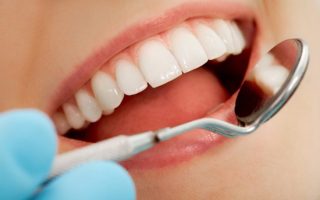Available since 1999, Invisalign has revolutionised the world of orthodontics, with an estimated three million people worldwide undergoing Invisalign treatment since its launch.
Using a series of clear, removable aligners that gently shift teeth into position, it’s a treatment that appeals to teens and adults alike for its near invisible look and convenience.
However, as appealing and popular as Invisalign is, it’s not a treatment that suits all patients. So, here’s what we consider when deciding if Invisalign is right for you.
How it works
Invisalign uses a series of custom-fitted clear aligners that are regularly changed to guide teeth into the desired position. Patients are required to wear their aligners 22 hours a day, removing them only to eat and for rare special occasions.
Invisalign treatment is ideal for people seeking a more discrete orthodontic option, and this has seen Invisalign become the treatment of choice for a large number of adults looking to straighten their teeth.
It is particularly popular for those in the workforce where appearance is a factor, or those straightening their teeth for a special occasion like a wedding.
For teens who are self-conscious about their appearance, Invisalign is also an ideal option.
It is a treatment that requires discipline, due the fact it is only effective with consistent, regular wear.
When Invisalign suits
Invisalign is potentially suitable in a wide variety of situations including; crowding, crossbite, overbite, underbite, and spaced teeth.
That said, if a situation is too severe, other treatments like traditional style braces might be the preferred option.
A quick comparison
|
|
Invisalign |
Traditional braces |
|
Look |
Clear, removable aligners |
Fixed, metal arch wire and brackets |
|
Length of treatment |
12-18 months. To be worn at a minimum of 22 hours a day. |
Up to two years, 24/7 |
|
Care |
Brush and rinse trays in luke warm water. Remove prior to eating. |
Brush carefully around the wires and brackets three times daily, rinse mouth after food. |
|
Benefits |
Discrete, removable when required |
Highly effective for treating even the most complex treatments. |
|
Appointments |
Regular aligner changes, visits to orthodontist every four to six weeks |
Every four to six weeks
|
|
Drawbacks |
Requires disciplined wear |
Not as aesthetically pleasing |
|
Suitable for |
General straightening and aligning of teeth |
|
|
Not ideal for |
More complex treatment such as: Back tooth bite issues, the need to rotate canines or premolars, the need to move teeth vertically. |
A tailored approach
At Norwest Orthodontics we assess every patient on their unique situation and desired outcome. Our ethos revolves around creating the ultimate smile that will last for a lifetime, and we have a suite of orthodontic treatments that we apply to achieve the best possible results.
For some patients, we recommend Invisalign, but for others we may suggest a different course of action based on their unique needs. The only way we can ascertain which option best suits you is to assess your teeth, and we welcome you to come in for an initial consultation.
About Norwest
Norwest Orthodontics specialises in helping patients achieve a great smile, no matter their age. We feature a range of orthodontic treatments that span from early intervention right through to remedial adult work.
You can learn more about our services, or contact us to make an appointment.




